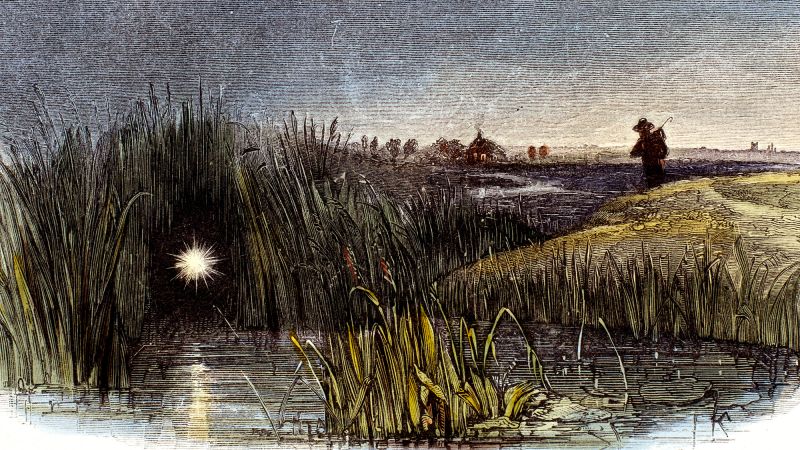Hovering blue flames that flicker over bogs and marshes have inspired ghostly folktales for centuries. Known as “will-o’-the-wisp,” “jack-o’-lantern,” “corpse candle” and “ignis fatuus” (“foolish fire” in Latin), the global phenomenon has a spine-tingling history. But its origins could now have a scientific explanation: tiny flashes of lightning that ignite microscopic bubbles of methane.
Scientists have long suspected that the will-o’-the-wisp’s spectral glow came from a chemical reaction in gases released by decaying organic matter. Methane, which is odorless, colorless and highly flammable, is one such gas. Swamp gas is about two-thirds methane, and when methane reacts with oxygen, the oxidized methane glows blue-violet. However, methane does not spontaneously ignite in oxygen’s presence.
New research suggests that the elusive will-o’-the-wisp is triggered when flashes of “microlightni
Continue Reading on CNN
This preview shows approximately 15% of the article. Read the full story on the publisher's website to support quality journalism.
